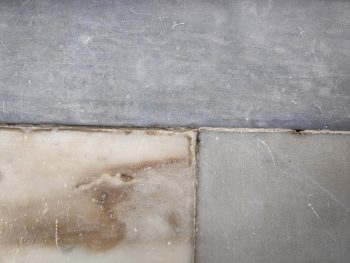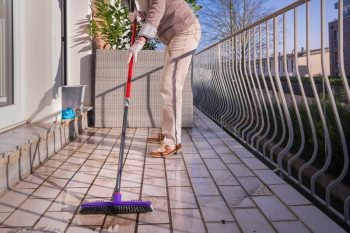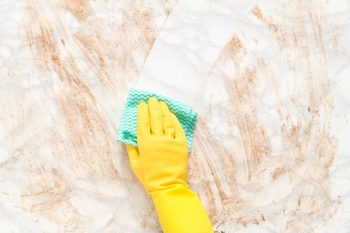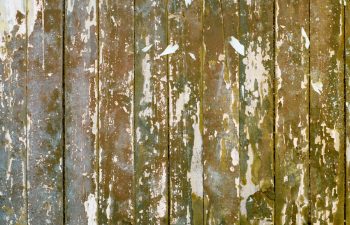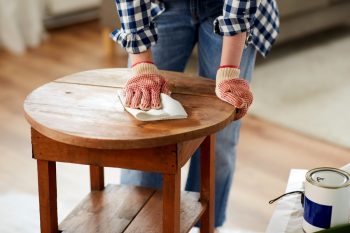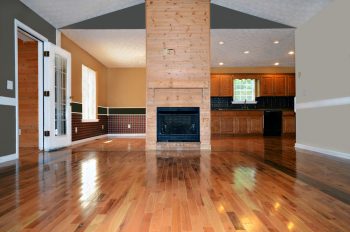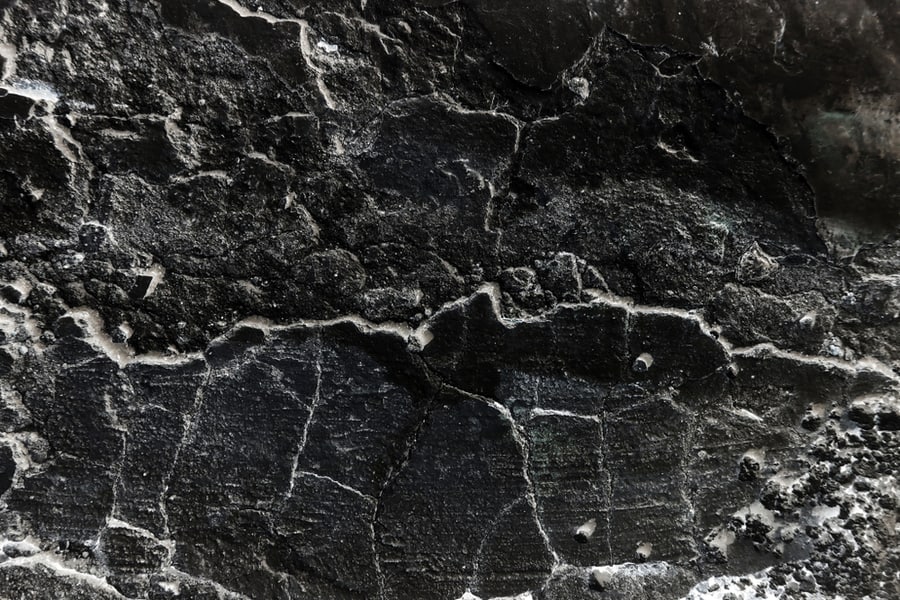
Are you looking for a way to remove soot from your concrete floor? Worry not! You’re not alone. There are millions of people in need of this same solution.
Soot stains are a common problem that many homeowners face when they have BBQs and parties.
So! Here are some tips to help you remove soot from your concrete surfaces.
Concrete has been used worldwide for over 50 years as a famous building material. However, it does come with its share of problems.
The most common one is soot, which appears quickly on concrete due to pollutants like smoke and pollution particles from automobile exhausts.
It is a black, tar-like substance that occurs by fuel combustion. It’s found on many materials, including concrete sidewalks, patios, and floors – creating unsightly stains and odors. Although various products can remove soot from concrete, you must choose eco-friendly and safe options.
Therefore, use a direct water stream with a pressure washer, garden hose, or pressure nozzle to combat those pesky marks.
For further assistance, we’ve also listed the following top 5 methods to remove highly stubborn soot stains from concrete:
- Try a mixture of TSP or chlorine bleach with hot water
- Use poultice
- Use baking soda
- Apply powdered dish detergent
- Try acid or alkaline cleaner
Without further ado! Let’s figure out these methods one by one.
When discussing soot on concrete, you may think of black specks that look like dirt or dirt mixed with black powder. Hence, this article will describe how to remove these dark specks from concrete using various methods and products.
5 Ways To Remove Soot From Concrete
Anyone who has ever experienced a house fire knows the devastation caused by soot and smoke. Fortunately, there are some specific techniques for removing soot from concrete that won’t result in more harm.
The instructions in the following article will demonstrate how to remove the soot from your concrete surface without further deteriorating it.
1. Try a Mixture of TSP or Chlorine Bleach With Hot Water
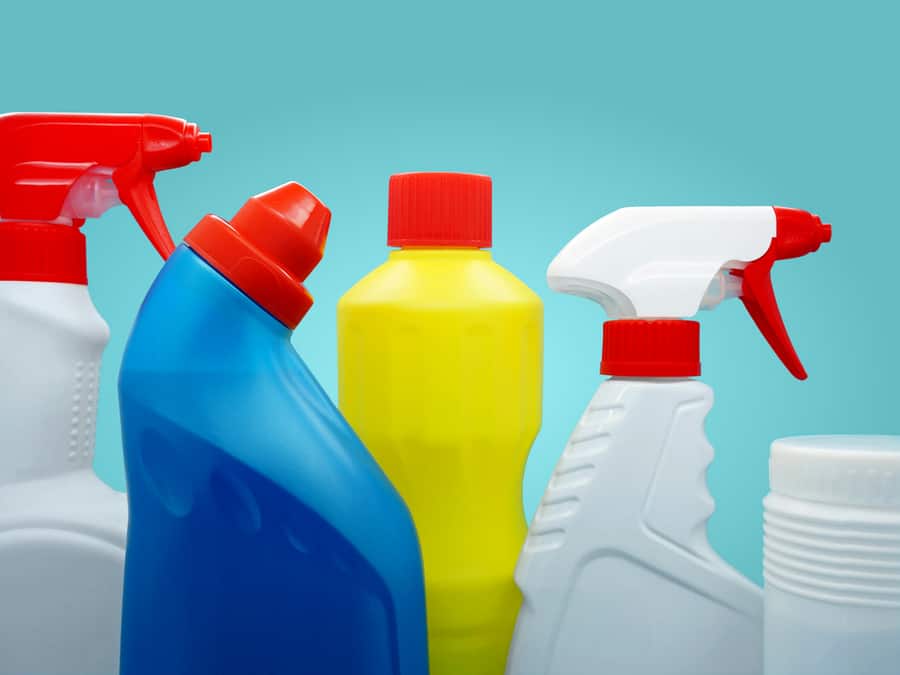
Tools: Safety gears, power washer, plastic covers or masking tape, TSP or chlorine bleach, warm water, rigid-bristled brush, cleaning powder, and cleaning pad.
TSP and chlorine bleach are robust cleaning solutions that may efficiently cut through grease and mildew stains. Moreover, their combination with hot water effectively eradicates moderate or fresh stains from concrete surfaces.
But before you begin, put on your safety equipment. Then use a pressure washer (if available) to clean the affected area.
Next, shield surrounding things with plastic coverings or masking tape and start the procedure.
Directions
Prepare a mixture of TSP or chlorine bleach with hot water following the manufacturer’s instructions and spread it on soot. Then use a sharp bristle to scrub it and leave it for five to ten minutes to see the magic.
You can add the extra solution per your requirement, so avoid letting the mixture dry. Again use a bristle brush to scrub away any leftover soot or smoke stains.
If necessary, rinse the area with clean water, or use an absorbent cloth or paper towel to wipe them out.
After that, apply some scouring powder to a scouring pad and gently clean the surface.
Finally, for interior or exterior applications, power wash, rinse, flush the surface, or lightly rinse, soak up, and wipe.
Check your local regulations before buying TSP because it is highly acidic and has been outlawed in several states. Or, even better, use a TSP substitute that is safe for the environment and still has the same cleaning power.
Wear sturdy protection gear, such as thick long sleeves and pants, acid-resistant gloves, safety goggles, and a respirator to avoid inhaling dangerous fumes. Also, make sure to read all of the manufacturer’s instructions.
2. Apply Poultice
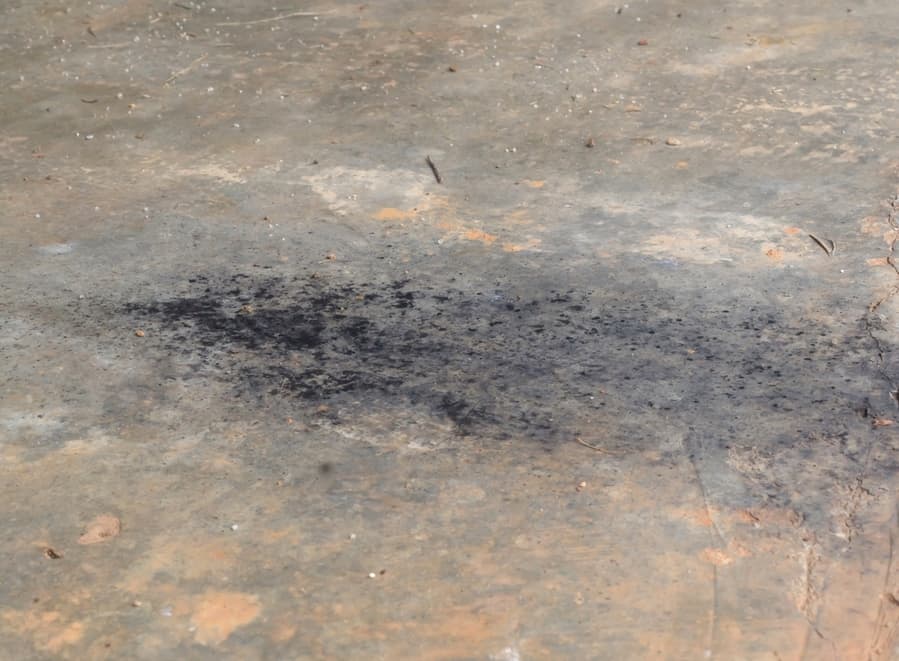
Tools: Gears for safety, chlorinated bleach, bristled brush, clean water, sawdust, cat litter, and talc.
It is one of the best ways to eliminate concentrated, deep, tenacious, and ancient smoke stains. You can use this method if the previous method fails to remove your soot stains.
It entails applying a chlorine bleach poultice directly to the surface (a thick paste made of talc powder and chlorine bleach).
Furthermore, mixing the paste to the optimum consistency for vertical surfaces is crucial for it to adhere and hold.
Directions
Firstly don your protective gear and make a thick paste of poultice by combining talc powder with chlorine bleach. Then apply the paste to the surface and leave it to dry.
Use a bristle brush to scrape the leftovers. After the poultice has dried, scrape and scour the residue off before giving the area a good rinse.
Make sure to use clean water to rinse and flush thoroughly.
Chlorine is a hazardous product that combines with other compounds to form a deadly gas and is corrosive to the flesh.
Therefore, carefully handle it while making a poultice and put on a respiratory mask to protect your lungs.
3. Use Baking Soda

Tools: Baking soda, water, small bowl, soft-bristled brush, and water.
Baking soda is a powerful all-natural cleaner. It can remove many stains from concrete without leaving any residue behind. You can also consider this multipurpose cleaner that works as an effective soot remover.
Directions
Begin the process by pouring water into the charred area. Then take a small bowl and combine the baking soda with water to make a thick paste. Make sure it is sufficient to cover the entire region.
Spread the paste over the burned areas, then leave it to settle for approximately an hour. Scrub the concrete with a soft-bristled brush. Afterward, use a hose to spray the solution or a pail of water to rinse it thoroughly.
Repeat the treatment if burn marks still exist.
4. Apply Powdered Dish Detergent
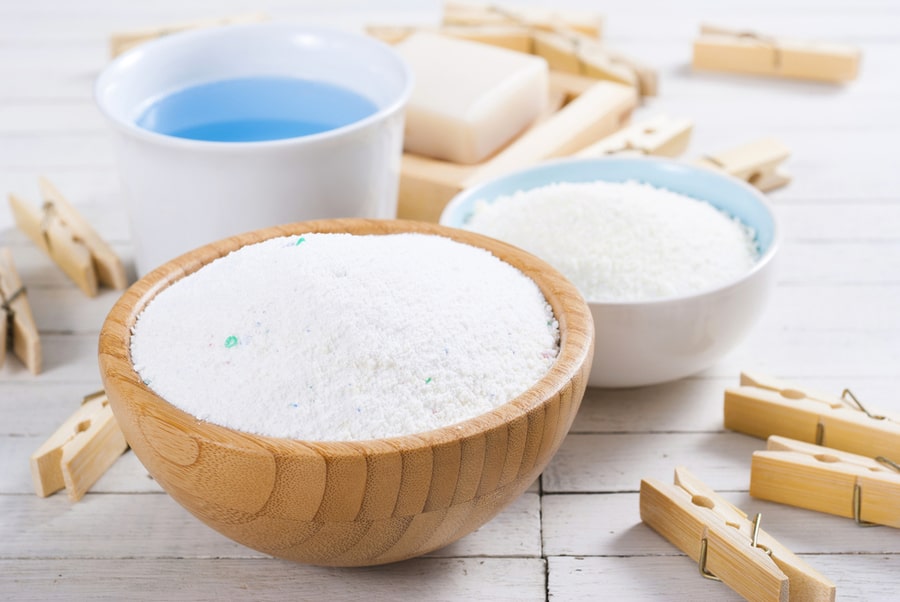
Tools: 1 cup powdered dish detergent, 1 gallon hot water, scrubbing brush, and hot water.
Dish soap in powder form is a powerful yet gentle cleanser. So, try this one if you need a rapid stain removal technique.
Directions
Add 1 cup of powdered dish detergent and 1 gallon of hot water to a big bucket. To remove the discoloration, immerse a bristle brush in the soapy solution.
Start cleaning the stain near the less firmly embedded edge, and concentrate towards the center. Then use warm water to wash the affected area.
Continue rinsing until you eliminate all the traces of the stain.
5. Try Acid or Alkaline Cleaner
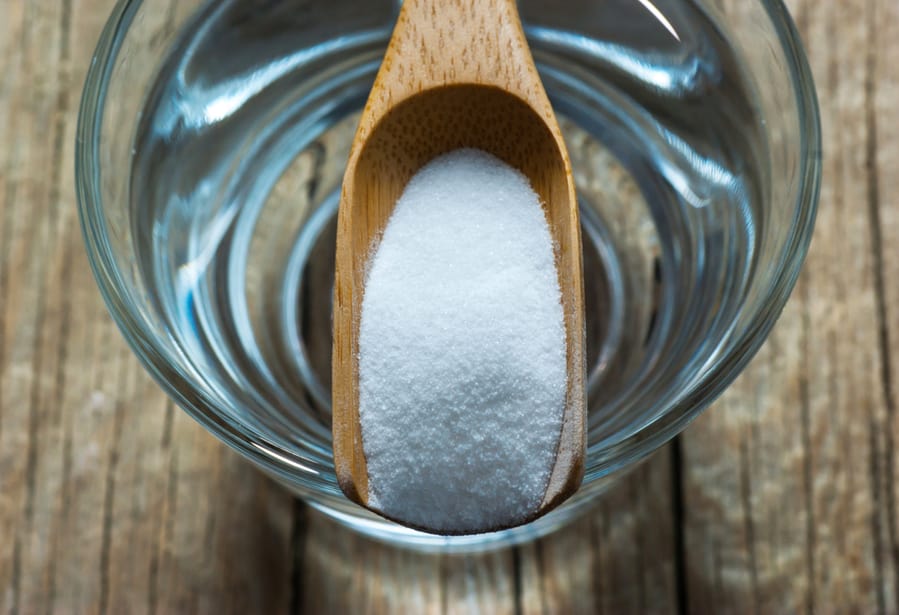
Tools: Acid or alkaline cleaner, scrubbing pad, and water.
An acid or alkaline cleaner is one of the most popular cleaning methods to remove dark sooty specks from concrete surfaces. You can get these cleaners from your nearest hardware shop, so try them to give your concrete a fresh look.
Directions
First, apply the acid or alkaline cleanser to the damaged area and scrub it. Afterward, rinse the surface with water once you’ve washed it, then let it air dry.
Repeat this procedure if there are still stains after drying until no soot is visible.
If your concrete contains stains from oil or other chemicals that are hard to remove, you may need to use a pressure washer.
Additionally, always wear gloves when applying any chemical, as most cleansers will irritate the skin if they come into prolonged contact with it.
Conclusion
Simply put, don’t despair if your concrete has soot stains. We know it can be pesky, but nothing says your concrete has to be dirty. It can look good if you know how to clean it properly.
Therefore, try these stain removal tips first when attempting to remove a soot stain. Still, if you cannot resolve the issue alone, you can contact some dry cleaners that provide specialized ozone treatments to eliminate smoke and soot damage.
Frequently Asked Questions
Which Is the Ideal Tool for Removing Soot?
A special sponge known as a “soot sponge” or “soot eraser” is made of natural rubber that can easily lift soot and dust from various dry surfaces.
Hence, one of the best tools for removing soot smoke stains and cleaning up after a fire is this inexpensive, simple-to-use substance that typically leaves no residue on painted walls.
Furthermore, it works well with various surfaces, including wallpaper, bare concrete, wood, metal, painted surfaces, fabrics, etc.
All you have to do is use the dry sponge to wipe the dry surface, like an eraser, to remove pencil marks.
Is Vinegar Effective for Removing Soot From Bricks?
Soot and smoke stains can be thoroughly cleaned and eliminated from brick walls and concrete surfaces with vinegar.
However, because vinegar is acidic, it has the potential to etch and harm the surface.
Aside from that, while using a dilute vinegar solution for a brief period is typically harmless, using it repeatedly over time can be harmful.
Additionally, following cleaning with an acidic solution, the concrete surface needs to be neutralized.
How Does Soot Affect Our Health?
Since even minute levels of soot can be hazardous to your health, there is no such thing as a “safe” level of exposure. Respiratory conditions, such as bronchitis, breathing difficulties, and asthma, can be brought on by inhaling soot.
Soot can enter your body by inhalation, ingestion, through your skin, and through your eyes, and it has the worst effects on infants and older people who already have breathing issues.
How Can I Remove the Soot From My Carpet?
It can be intimidating to consider having to wipe soot out of your carpet. However, getting rid of it doesn’t have to be tough! You must first use a low-setting vacuum to remove the soot from the rug before sucking it back up with a wet/dry vacuum.
Add something to this combination, such as baking soda or cornflour, to absorb grease and oil that can leave stains on your flooring.
If none of these approaches are successful, try employing dry cleaning agents like benzyl acetate (found in hairspray) or xylene (a solvent).
Try each one out at a time to see which one suits you the best!
How Can I Get Soot off My Painted Walls?
When addressing soot or smoke stains on painted walls and other surfaces, it is crucial to do dry cleaning first.
Furthermore, using a vacuum cleaner or a soot sponge is a staple of dry cleaning.
